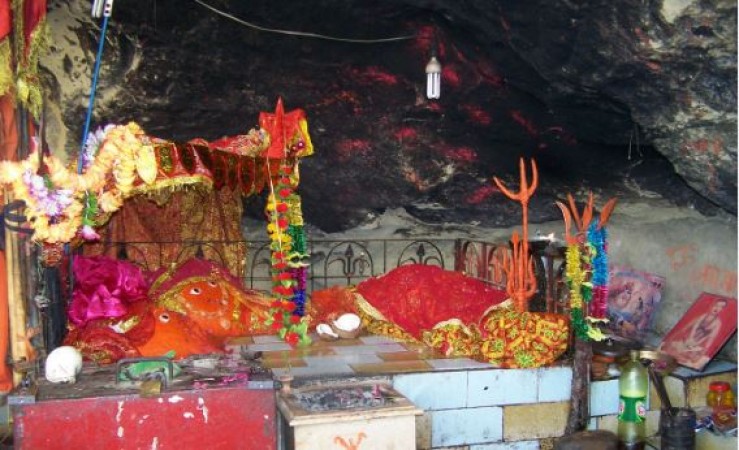
Hinglaj Mata Mandir is a significant Hindu pilgrimage site located in Pakistan. It holds immense religious and historical importance for Hindus, attracting thousands of devotees from all over the world. The temple is dedicated to Hinglaj Mata, a revered Hindu goddess, and is situated in the Hingol National Park, in the Balochistan province of Pakistan. This ancient temple has a rich history that intertwines mythological legends and cultural heritage.
The history of the Hinglaj Mata Mandir is shrouded in mythological narratives and religious beliefs. According to Hindu legends, the temple is considered one of the 52 Shakti Peethas, which are sacred shrines dedicated to the divine feminine energy of the goddess Shakti. It is believed that the head of Sati, the first wife of Lord Shiva, fell at this location after her self-immolation during the great Daksha Yagna. Thus, Hinglaj Mata is worshipped as a manifestation of the divine mother and symbolizes power, strength, and protection.
Also Read: Ancient Wonders: Explore the Oldest Temples on Earth
The geographical location of the temple adds to its spiritual significance. Hinglaj is situated in a natural cave formed by the Hingol River, surrounded by awe-inspiring cliffs and rock formations. The serene landscape and the presence of a flowing river near the temple make it a serene and picturesque site, enhancing the spiritual experience for pilgrims.
The Hinglaj Mata Mandir attracts thousands of pilgrims, not only from Pakistan but also from India and other countries. Every year, during the Hindu festival of Navaratri, which celebrates the nine forms of the goddess Durga, a grand fair takes place at the temple. Devotees visit the temple to seek blessings from Hinglaj Mata and offer prayers, flowers, and other offerings.
Pilgrims undertake an arduous journey to reach the temple, often traveling long distances on foot or by using various modes of transportation. The journey can be challenging due to the remote and rugged terrain of Balochistan. However, the spiritual significance and the faith of the devotees drive them to undertake this pilgrimage with unwavering determination.
Also Read: Cambodia: A Land of Ancient Splendor and Resilience
The temple complex itself consists of the main shrine dedicated to Hinglaj Mata and several smaller shrines and idols of other Hindu deities. The main deity is represented by a large rock formation with a naturally formed impression resembling a yoni, symbolizing the divine female principle. This sacred rock is adorned with various ornaments and garlands as part of the daily rituals.
The Hinglaj Mata Mandir serves as a testament to the cultural diversity and religious harmony in the region. Despite the complex political history between India and Pakistan, the temple has managed to retain its significance as a holy site for Hindus on both sides of the border. The government of Pakistan recognizes the religious significance of the temple and has taken steps to facilitate the pilgrimage for Indian devotees as well.
Also Read: Udupi Sri Krishna Matha: A Journey through Time and Spirituality
The temple also serves as a symbol of peace and unity, as people of different faiths and backgrounds come together to celebrate the divine mother and seek her blessings. This cultural significance extends beyond religious boundaries and contributes to the broader understanding of South Asian heritage and spirituality.
Despite the cultural and religious importance, the Hinglaj Mata Mandir faces various challenges. The remote location of the temple, along with the rugged terrain and lack of proper infrastructure, makes it difficult for devotees to visit the temple comfortably. The safety and well-being of pilgrims during their journey to the temple need to be carefully managed and monitored.
Additionally, due to its age and exposure to the elements, the temple complex requires regular maintenance and preservation efforts to prevent deterioration. The conservation of this ancient site is crucial to safeguard its historical and cultural significance for future generations.
Also Read: Kotoku-In Temple: A Serene Sanctuary of Peace in Japan
The Hinglaj Mata Mandir in Pakistan is a place of great devotion, history, and cultural importance for Hindus around the world. Its mythological origins and the awe-inspiring natural surroundings make it a unique and spiritually enriching pilgrimage destination. The temple serves as a symbol of religious harmony and cultural diversity in the region, bringing people of different backgrounds together in celebration of the divine mother.
Efforts must be made by governments, communities, and devotees to preserve and protect this ancient temple, ensuring that it continues to inspire and instill faith for generations to come. The Hinglaj Mata Mandir stands as a testament to the enduring power of faith and the enduring human connection to the divine.
Also Read: Kinkaku-ji Temple: A Glorious Jewel of Japan's Golden History